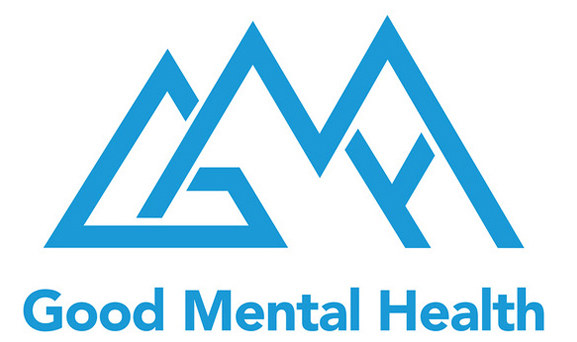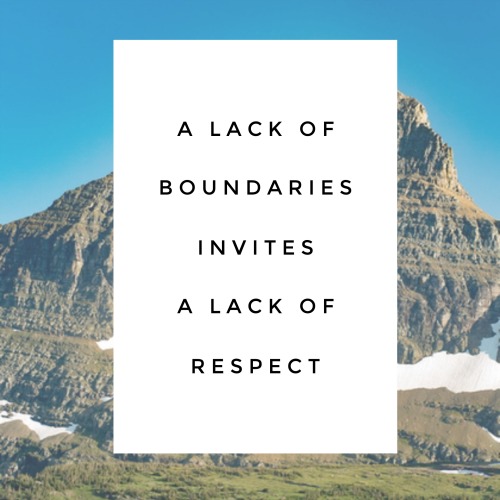Boundary-setting 101
Earlier this year I said “yes” to a request, then re-evaluated and said “no” to the same request, then watched helplessly as the fallout included an ugly social media tirade and damage to no less than 5 relationships.
What led to this unfortunate situation? Where did I go wrong and what could I do better next time?
Boundaries. Plain and simple.
Make ’em clear. Set ’em early. And for certain people, make them non-negotiable.
Let’s dissect:
Anatomy of a flexible thinker:
Flexible types who are slow to anger and slow to judge seem to be those who struggle most when it comes to setting boundaries with other people.
We enjoy taking our time when making decisions. Knowing that we wouldn’t take advantage of others, we don’t expect others to take advantage of us. We are understanding when circumstances change and feelings change. We communicate our wants and needs, anticipating that they will be met without trying to control how it will happen. We have faith that everything is unfolding just as it should. We tend not to vigorously defend our boundaries because we believe others react to life in a similar manner as do we.
We are known as the “Type B” personalities of the world.
Laid back. Mellow. Life is good. All is good. Until it’s not good.
Anatomy of a rigid thinker:
The more rigid types are quicker to anger and quicker to judge whether a situation is “good” or “bad.” Their thinking might be described as “black or white” rather than shades of gray. These are often the “Type A” planners, organizers, and go-getters. These are also the folks who Type B’s often struggle to set boundaries with the most.
While Type B’s are slow to decide, the Type A’s have decided. While Type B’s are determining how we feel and how best to proceed, the Type A’s have already mapped out a plan and assigned us a role. While the flexible thinkers are weighing options and making up our minds, the more exacting thinkers have already moved on, their expectations for us set, leaving us to follow suit.
So, when the Type B finally arrives at a decision, which may not be aligned with that of the Type A, the fireworks can start.
Healthy Boundaries:
A “healthy boundary” conversation might go something like this:
“I’m sorry, but I can’t do what you have asked me to do.”
“Okay, thanks for your consideration. Maybe next time?”
“Sure. Ask me next time and I will see if I can help you then.”
“Okay then.”
“Okay then.”
Mutually respectful and beneficial relationship proceeds. No harm, no foul.
An “unhealthy boundary” conversation might go something like this:
“I’m sorry, but I can’t do what you have asked me to do.”
“Why not? You already said you would. You lied to me!”
“I didn’t lie to you. The situation changed and I changed my mind. I’m sorry.”
“You don’t care about me or you wouldn’t do this to me! This relationship is over!”
Participants part ways, never to interact again, resulting in a trail of hurt feelings and damaged relationships.
If you find yourself in a relationship with someone who, in an effort to manipulate or control you, leverages the entire relationship, you are participating in a toxic relationship. These relationships are drama-filled, difficult, and riddled with ongoing power and control issues.
Anatomy of a Toxic Relationship:
You know you’re in a toxic relationship when:
- The other person expects you to go along with their agenda without regard for your own needs or desires.
- They get angry when you don’t play by their rules or do what they want you to do.
- They won’t take no for an answer, even when it is a clear and firmly stated no.
- Asserting a personal boundary costs you the entire relationship.
Creating Boundaries:
You are allowed to:
- Say no. Changing your mind from no to yes is typically easier than from yes to no. This gives you time to think before you commit, so get in the habit of saying no first.
- Be selective with who you invite into your life. Our time and energy is precious. Let’s not waste it on people who don’t honor our boundaries or on activities that aren’t in alignment with our highest desires.
- Schedule appointments for self-care in the same manner you schedule appointments for other reasons. When someone asks for time you are not willing to give, truthfully respond with, “I’m sorry but I’m not available. I have an appointment.” Your appointment can be with a bubble bath and a good book.
- Take your time. Life is a marathon, not a sprint. We don’t need to rush into decisions, or act before we are ready, trying to adhere to someone else’s agenda.
- Assert and defend your personal boundaries with the expectation that your wishes will be respected.
- If someone attempts to manipulate or coerce by threatening to end the relationship if you refuse to do what they want you to do, let the relationship end. These are unhealthy relationships anyway!
Reach Out:
If any of these relationship characteristics resonate with you, or with someone you love, support is only a reach away. Your experiences are valid and real, with many people sharing in what you are feeling. You are not alone.
For mental health counseling in person or online, connect with our practice here or find local resources in the metro Jacksonville, Florida, area, by visiting our resource page here.
What other positive boundary-setting tips can you share?



 Hi, I'm Diana Brummer a psychotherapist, writer, and coach in St. Johns, Florida. I love helping people thrive in their relationships and their lives. My hope is that you find the information in these articles educational and useful. Thank you for stopping by!
Hi, I'm Diana Brummer a psychotherapist, writer, and coach in St. Johns, Florida. I love helping people thrive in their relationships and their lives. My hope is that you find the information in these articles educational and useful. Thank you for stopping by! 
